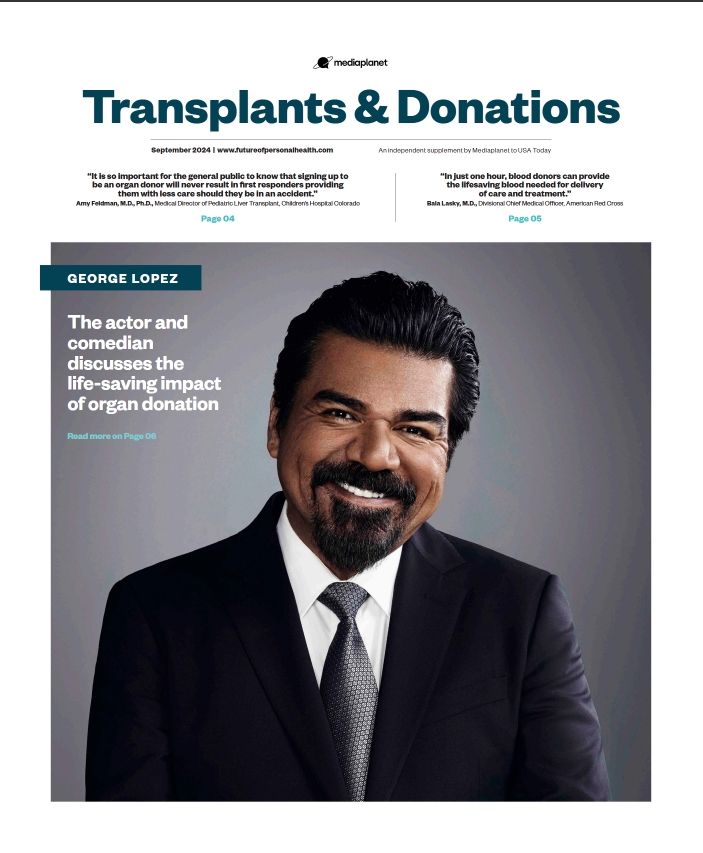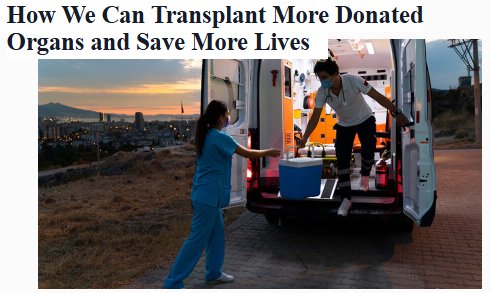AOPO is honored to join Mediaplanet’s national Donation & Transplant Campaign, featured in USA Today. This campaign highlights the critical need for registered organ donors and the profound impact each donor can make. It addresses current challenges and opportunities in the organ donation landscape, underscoring the life-saving power of transplants. AOPO President Dorrie Dils contributed an editorial discussing the rise in organ nonuse, particularly with kidney donations, and highlighting solutions underway.
The United States system for organ donation is strong and has demonstrated continuous growth for 13 consecutive years. This remarkable achievement was made possible by the generosity of organ donors and the tireless efforts of Organ Procurement Organizations (OPOs), nonprofit organizations that play a critical role in the donation process. OPOs work with hospitals to identify potential donors, provide counsel and support to donor families, and ensure that every donated organ is properly cared for and delivered to a patient in need.
In 2023, OPOs successfully recovered over 43,000 organs for transplant from more than 16,000 generous donors, saving a record number of lives.
More than 100,000 people are still waiting for a lifesaving transplant in the United States, and while organ donation has grown, the number of organ transplants has not kept pace. Most alarmingly, many organs donated by generous families are not used. This is a significant challenge and a primary focus for the community of donation and transplant professionals today.
The issue of organ nonuse
Kidneys are the most in-demand organ in the country and the organ most impacted by nonuse. In 2023, more than 8,500 kidneys — approximately 28 percent of those recovered — were not used. This issue also affects people of color disproportionately — a serious concern given that 63 percent of patients on the transplant waiting list are people of color, many of whom still await a kidney.
Several factors contribute to organ nonuse. Once an organ is recovered, time is of the essence to place it with the right recipient. Matching an organ with a patient and securing acceptance from a transplant center is a complicated process. The current allocation system can be cumbersome, and OPOs sometimes offer an organ to multiple centers hundreds of times. Ultimately, a surgeon may decline an organ in the hope of finding a “perfect” match for their patient, but in many cases, even complex organs could still be suitable. Repeated declines consume valuable time and often render organs nonviable.

Informing donor families that their loved one’s organ could not be used represents a secondary loss for the family and a tragedy for patients who die waiting for a transplant. Donor hospitals, OPOs, and transplant centers must collaborate and find ways to better utilize and honor the gifts of donors and their families and save more lives.
Working toward a solution
Alleviating organ nonuse is a community effort, and the Association of Organ Procurement Organizations (AOPO) and other key stakeholders are taking immediate steps to address it. Cutting-edge preservation technology to extend the viability of recovered organs is being used, and processes for organ matching and placement are being streamlined. For example, by improving IT systems for allocation and requiring transplant centers to establish accurate offer filters to ensure they’re only offered organs they can accept, we’re making an impact on organ nonuse.
Over the last year, OPOs have launched a series of collaborative forums, bringing leaders in donation and transplant together to share winning strategies for addressing organ nonuse directly. These Transplant Growth Collaboratives are a partnership with the Organ Procurement and Transplantation Network’s Expeditious Task Force, and they support transplant centers in identifying ways to work with their hospital systems to find more resources, enhance their ability to accept more organs, increase transplantation, and ultimately save more lives.
Looking ahead, AOPO has set an ambitious goal of achieving 50,000 organs transplanted in 2026 by continuing to improve organ utilization, enhance collaboration, address health inequities, and foster innovation. These collective efforts are vital to ensuring that every donated organ has a chance to save a life and that the invaluable gift of donation is honored.




